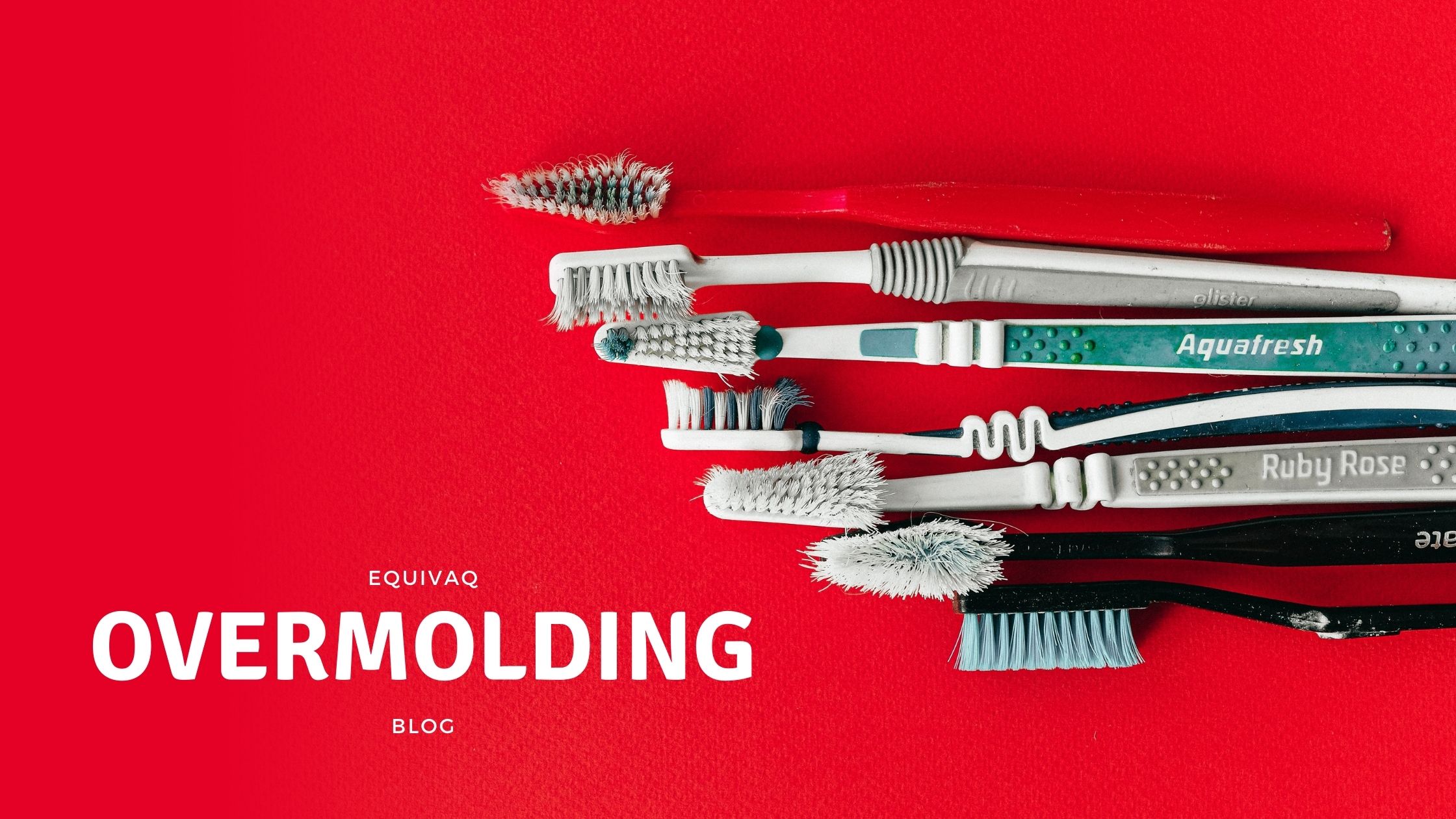I'm kind of like the toddler of our office honestly. I ask Tim, Jace, and Hunter a million questions, then ask a million more. Most of my blogs are a result of me asking an endless list of questions about different engineering things. This week, Jace and Hunter read an article about overmolding and were talking about it, so I (of course) butted in and started asking questions. I love getting to come to work and learn something new every day, and I'm also very appreciative of my coworkers for tolerating my shenanigans and always indulging my questions.
So, on to the point! What is overmolding? Overmolding is a multi-step injection molding process where two or more components are molded over top of each other. It is also called "two-shot molding," because of the two step process. It's done by injecting the first piece (the base) and then it's allowed to cure, then the second layer is molded directly on top of the first to create a single solid piece. The example Jace gave me of this is a toothbrush with rubber grips. The initial piece is the hard plastic body of the toothbrush, the second is the rubber grip material that sits on top. In the image below, step 1 is the white plastic, and step 2 is the blue rubber. Another example of rubber over plastic overmolding are Speck phone cases, which are hard plastic with lines of rubber for gripping.
 It is also possible to do overmolding with metal. It's popular in razor handles where the base is metal with rubber gripping on top. Plastic on plastic is also a common overmolding application, it's used to break up colors for aesthetics. For example, a plastic screwdriver handle that is two different colors of plastic is likely overmolded.
It is also possible to do overmolding with metal. It's popular in razor handles where the base is metal with rubber gripping on top. Plastic on plastic is also a common overmolding application, it's used to break up colors for aesthetics. For example, a plastic screwdriver handle that is two different colors of plastic is likely overmolded.
There are a handful of benefits to using overmolding, including simplicity, lower costs than other manufacturing methods, and it reduces the need for product assembly because parts are manufactured on top of each other, which also results in a stronger, more durable design. There are, however, limitations. Overmolding reduces costs over time, but the upfront costs are very high. It's time consuming and expensive to manufacture and modify tooling out of metal. Two-shot injection molding machines are complex to dial in. This means there is a higher breakeven point and you have to be producing higher numbers of whatever you're making in order for it to be cost effective. This makes sense for things like toothbrushes or disposable razor handles, which are produced by the billions 3.5 billion toothbrushes are sold each year, to be exact.
What other criteria should you meet before considering overmolding?
1. Your finished piece can be made of thermoplastics, rubber, or metal
2. Your finished design consists of multiple layers, materials, and/or colors
3. You will be manufacturing both the substrate and the second layer
4. Your completed product will not need to be taken apart or disassembled
There are, of course, exceptions to these rules, as well as other rules to follow, but this is a good place to start. The examples I gave above of razor handles and toothbrushes are products in the beauty industry, however overmolding is a good fit for many industries, including automotive, consumer goods, medical, and electrical. It all depends on what you are manufacturing and whether or not overmolding is a good fit for your manufacturing needs.
Overmolding for prototyping doesn't always make sense, given the high initial investment cost, but designers at the Google Advanced Technology and Projects (ATAP) lab were able to cut costs by more than $100,000 and shorten their testing cycle from weeks to just three days using a combination of 3D printing and injection molding. Hopefully this means we will see the cost of overmolding decrease and become more accessible in the future!




 EQUIVAQ SOFTWARE offers Apps to enhance the lives of SOLIDWORKS PDM Administrators and users by offering advanced PDM Add-in Apps for an affordable monthly license fee in order to bring PDM automation within reach.
Our products are straight forward and come with detailed easy setup instructions to get you started.
EQUIVAQ SOFTWARE offers Apps to enhance the lives of SOLIDWORKS PDM Administrators and users by offering advanced PDM Add-in Apps for an affordable monthly license fee in order to bring PDM automation within reach.
Our products are straight forward and come with detailed easy setup instructions to get you started.